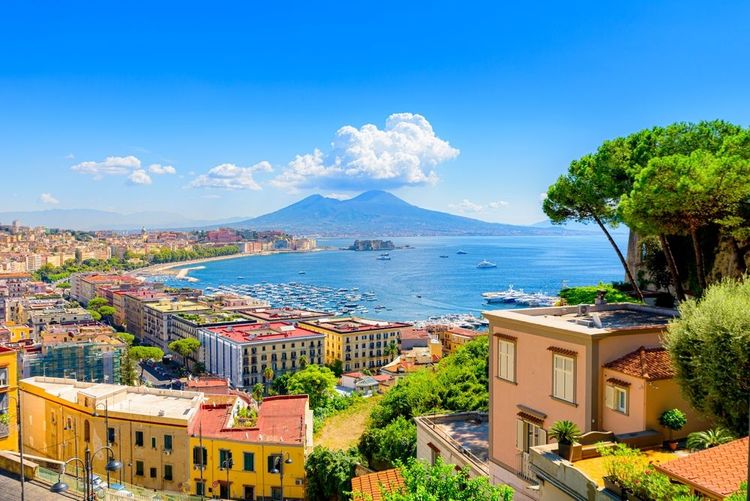Probably born in Benevento in 272, he was bishop of the city and became a saint after his death, thanks to several miracles attributed to him, the first of which was stopping the eruption of Mount Vesuvius in 1631. During his episcopate, at the height of Emperor Diocletian's persecution of Christians, he was accused of interceding for the release of prisoners who were to be executed and fed to ferocious beasts. Thanks to a miracle attributed to him, the beasts retreated into their cages and the massacre was averted.
The city of Naples has more than 400 churches in its historic centre alone, which just goes to show how steeped its inhabitants are in Christianity and its symbols. But Neapolitans have a very special relationship with the sacred, one that differs from simple prayer. Their relationship with the saints, God or the Virgin Mary becomes a privileged moment of encounter where the Neapolitan, in the contemplation of prayer, confides his problems and asks God for help. Whether it's finding a job, recovering from an illness or winning the super lottery.
The saint par excellence who receives all Neapolitans' requests is St Januarius of Benevento, or San Gennaro to the Italians, the city's patron saint who, every 19 September, brings good luck or bad luck to the Neapolitan city thanks to the miracle of the melting of his blood.
The blood of San Gennaro, preserved in a phial in Naples Cathedral, is displayed during mass on 19 September, waiting for it to melt, as a good omen for the city and its entire population. The anticipation of this event and all that goes with it is a moment when the sacred and the profane walk hand in hand. The city comes together to celebrate.
The event is so keenly felt and commented on that all the national news channels are talking about it.

Who is Saint-Janvier / San Gennaro?

In the cathedral: San Gennaro emerges unscathed from the furnace’ by Jusepe de Ribera (1591-1652)
- © Isogood / 123RFUnfortunately, Gennaro, still a bishop, fell victim to the Great Persecution and was beheaded in 305. His remains and blood were preserved in ampullae. To this day, his relics and the famous treasure of San Gennaro are preserved in Naples Cathedral. They are part of the city's history and traditions.
This is just one of the stories told about this saint, but what is certain is that every year, Neapolitans look forward to the melting of the saint's blood as a good omen and, consequently, as a reason for celebration and happiness.
For, despite the obvious doubts about the veracity of the story, whether you believe in it or not, the miracle of San Gennaro unites all Neapolitans every year.
Today, San Gennaro, called Faccia Gialla (Yellow Face) by the Neapolitans, is an integral part of Neapolitan life, almost as if he were a confidant whom you ask for a favour and rage against if it doesn't arrive. A sort of love-hate relationship, like in the most classic love stories.
Curiosities
Why is he called "Yellow Face"?
Neapolitans call San Gennaro "Faccia Gialla" (yellow face) because the face of his statue, carried in procession on 19 September, is entirely gilded.
Naples Cathedral and the Treasure of San Gennaro
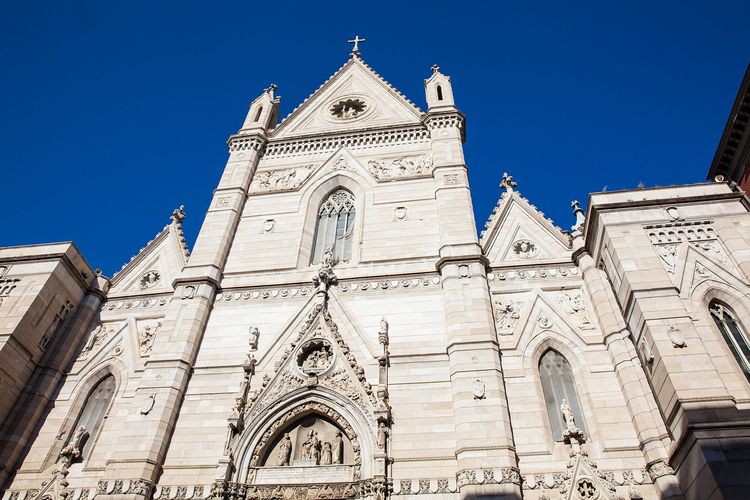
The Cathedral of Our Lady of the Assumption in Naples (Santa Maria Assunta, in Italian), known to all as the Duomo of Naples, is not just a church, but a place that houses priceless works of art as well as the famous Treasure of San Gennaro, which includes masterpieces of great value such as paintings, gold objects, jewels, precious textiles and all the gifts of great historical figures, including kings and queens, as well as fervent Neapolitans.
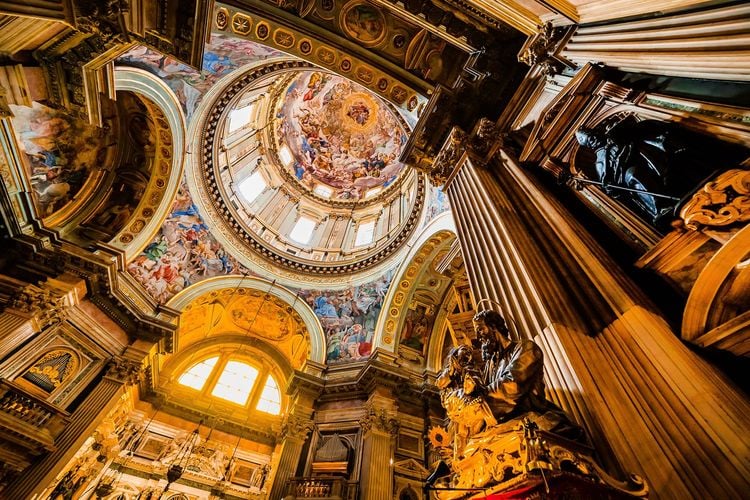
The treasure of San Gennaro has been classified as the most valuable treasure in the world, so much so that its value cannot yet be expressed in monetary terms.
The neo-Gothic façade of the cathedral has been rebuilt several times (most recently during the Second World War) and features marble works dominating the three naves and a rose window in the central nave, while the interior, with its Latin cross plan, features marble columns and arches.
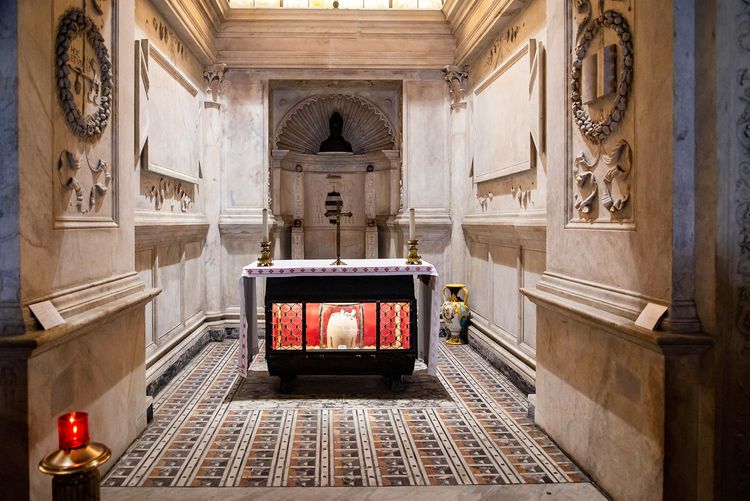
Crypt containing the relics of San Gennaro.
- © Enrico Della Pietra / 123RFAlmost 100 metres long, covered by a gilded ceiling that frames the five religious representations, the interior of the cathedral is a succession of incredible works of art depicting saints and religious scenes by Luca Giordano. All around, pillars support the marble busts, dating from the 1600s, of the first 16 bishops of Naples and the tombs of the city's kings and viceroys, while beneath the arches enriched with Baroque inserts are the two organs, one of which has more than 5,000 pipes.
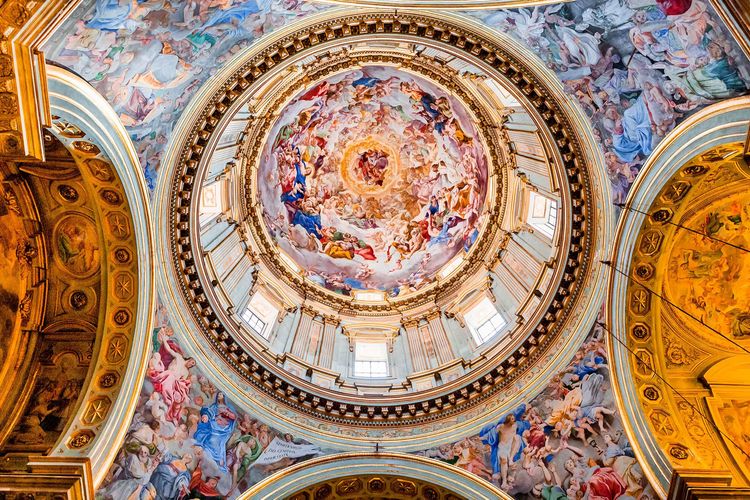
The ceiling of the Duomo dome.
- © Isogood / 123RFA magnificence that leaves you breathless with the finesse of its sculptures, the beauty of its paintings and the richness of its gold.
Good to know
Gennaro was his surname, not his first name. Despite this, it is still the most common male name in Naples.
Before being beheaded, he was thrown into the fire to die in great pain, but the fire did not burn him or his clothes.
The Church claims to be unaware of San Gennaro's prodigy, but to date no scientific explanation has been given for it.
Among the valuables in the Treasure of San Gennaro is a mitre (the headdress worn by popes and bishops) containing 170 rubies, nearly 200 emeralds and more than 3,300 diamonds (see photo below).
Practical information
Museum of the Treasure of San Gennaro
📍 Address
Via Duomo, 149 in Naples.
It is in the cathedral (duomo), but can be reached from Via Duomo.
⏰ Opening times
Open every day from 9:30 am to 6:00 pm
💶 Prices
From €12
🌐 Its website
Click here
The rite of the Miracle of San Gennaro
Although there are three dates when the miracle of San Gennaro's blood is celebrated (the first Saturday in May and 16 December), 19 September (the day of his death) is the official day when celebrations take over the streets of Naples.
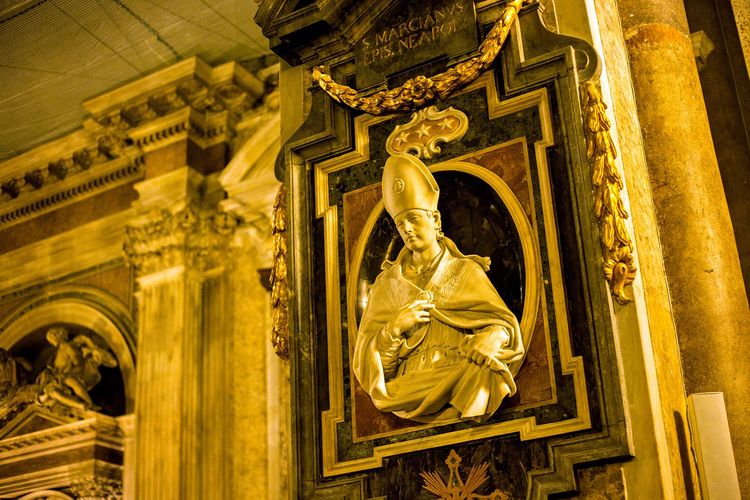
Statue of Saint Janvier (San Gennaro) in the cathedral.
- © Kutredrig / 123RFIn Naples, it's a public holiday, the offices are closed, the children are out of school and all the Neapolitans are fervently waiting for the miracle to happen. Naples Cathedral is packed, but it's not just the faithful or the believers. Everyone, even out of curiosity or proximity to their own city, is watching through the gilded walls of the cathedral or outside, and social networks and television are filming the crowd waiting for the miracle live.
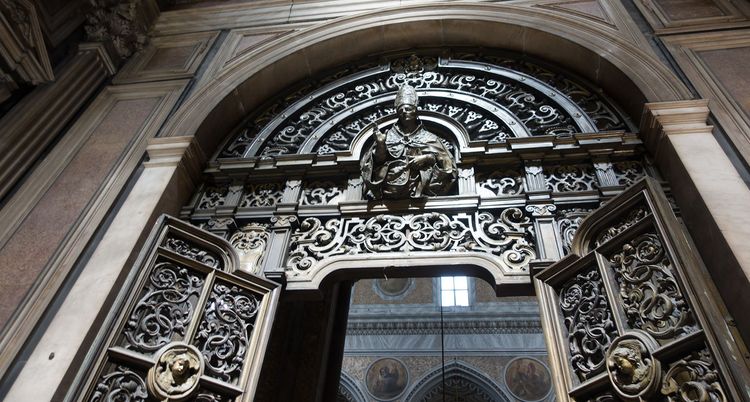
The interior portal of the cathedral with a statue of San Gennaro
- © Equilibriuman / 123RFThe celebrations last two days. The day before, a long procession, in which the statue of the saint is carried on the shoulders, makes its way through the streets of the historic centre of Naples, followed by crowds of the faithful and the unfaithful, who accompany San Gennaro to the cathedral to await mass on 19 September.
When the prodigy occurs and the ampulla is turned to show the faithful the true dissolution of the blood, a long, liberating applause resounds inside the cathedral and reverberates through the streets of the city.
Folklore aside, it's an intense moment that moves everyone and holds the promise of hope for all the city's inhabitants.
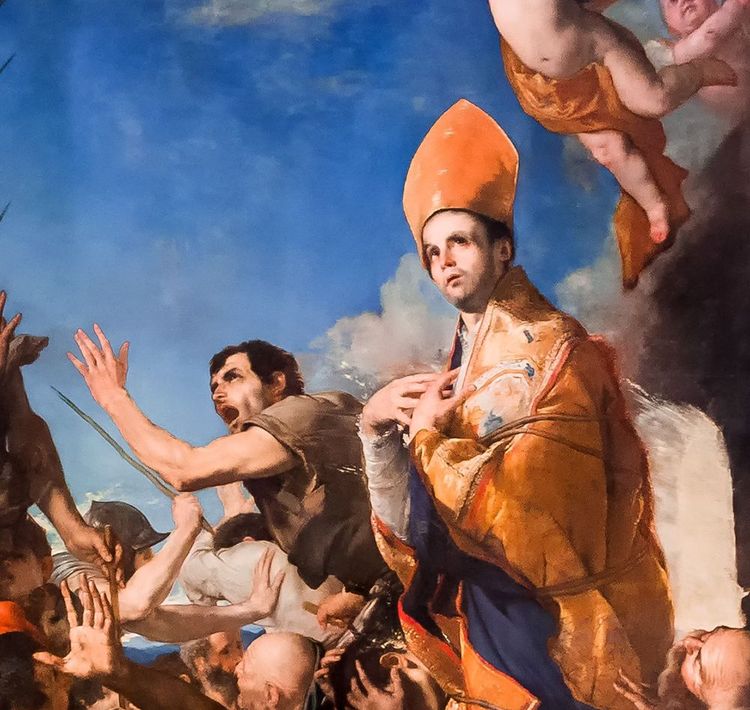
Saint-Janvier (San Gennaro)
- © Isogood / 123RFPractical information
How do I get to Naples?
From Naples International Airport ✈️, shuttle buses will take you to Naples Central Station or the Port of Naples, from where you can get around comfortably on foot or by metro.
🚌 Which transport?
Alibus shuttle bus
💶 Ticket price
5 € It can also be bought on the bus.
⏳ Duration
15 minutes
Where to stay near San Gennaro and the Duomo?
 Naples
Naples
